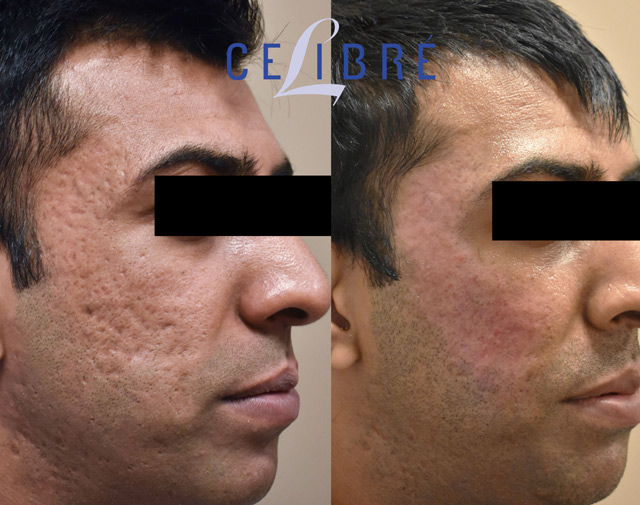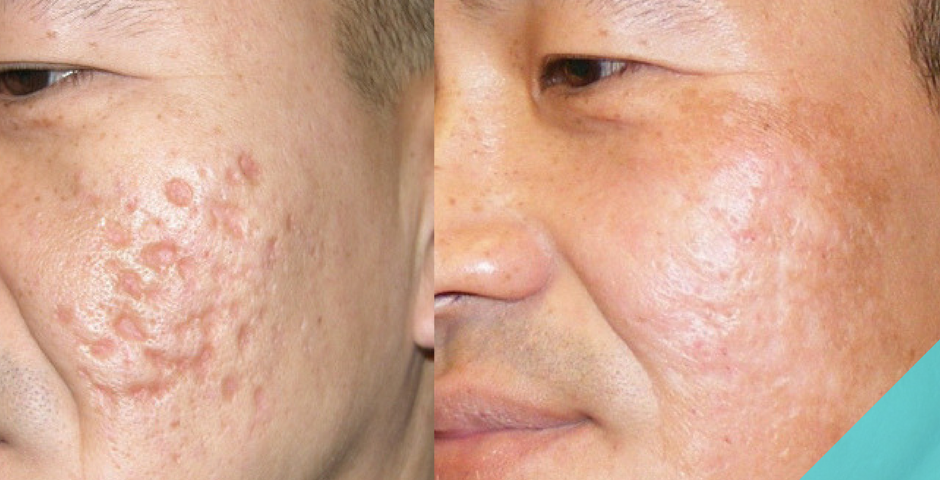Ideal Acne and Acne Scars Treatment: Restore Your Skin's All-natural Beauty
Understanding the Different Skin Disease and Effective Treatment Alternatives for Acne Scars
Acne scars stand for a complicated interplay of skin conditions that substantially effect individuals' self-esteem and overall skin wellness. Comprehending the distinct kinds of acne scars-- atrophic and hypertrophic-- along with their underlying causes, is pivotal for figuring out reliable therapy strategies. Various restorative alternatives exist, varying from advanced dermatological treatments to all-natural treatments. The efficacy of these treatments often hinges on tailored analyses by certified experts. As we discover the landscape of acne scar monitoring, it becomes apparent that the journey towards more clear skin might involve greater than just topical remedies.
Sorts Of Acne Scars
Acne marks can show up in various forms, each calling for certain therapy techniques. Both primary classifications of acne scars are atrophic and hypertrophic scars. Atrophic marks are identified by a loss of tissue, resulting in clinically depressed areas on the skin. These marks are additional classified right into three subtypes: ice choice marks, which are narrow and deep; boxcar scars, which are broader and have distinct sides; and rolling scars, which produce a wave-like appearance because of unequal skin texture.
In comparison, hypertrophic scars result from an overflow of collagen during the healing process, resulting in increased areas on the skin. These scars are often strong and can differ in color, in some cases showing up red or darker than the bordering skin.

Root Causes Of Acne Scarring
Scarring occurs as a result of the body's all-natural healing response to inflammation and injury triggered by acne sores. When acne forms, it sets off an inflammatory response, leading to the release of various cytokines and development elements that promote recovery. Nevertheless, this procedure can occasionally result in too much cells formation or inadequate fixing, leading to marks.
The primary reasons for acne scarring consist of the extent of the acne itself, period of the sores, and specific skin types. Severe inflammatory acne, such as blemishes and cysts, is most likely to result in scarring because of deeper tissue damage. In addition, improper handling of acne sores, such as squeezing or selecting, can aggravate tissue injury and inflammation, increasing the likelihood of scarring.
Hereditary proneness also plays a significant duty; people with a family members background of scarring are at a higher danger. Skin kind and shade can influence mark development, as darker skin tones may experience post-inflammatory hyperpigmentation, while lighter skin may establish atrophic scars.

Therapy Options for Scarring
Efficient therapy alternatives for acne scarring vary depending on the type and severity of the scars. Typically classified right into atrophic, hypertrophic, and keloid marks, these conditions call for customized techniques for optimum results.
For atrophic marks, which are defined by a loss of cells, treatments such as chemical peels, microdermabrasion, and laser therapy are commonly employed. These approaches promote skin renewal and stimulate collagen manufacturing, thus enhancing skin structure. Subcision, a minimally intrusive treatment, can additionally work by breaking up coarse bands beneath the skin.
Hypertrophic and keloid marks can be extra challenging to treat. Alternatives include corticosteroid shots to lower inflammation and flatten the marks. acne and acne scars treatment. In many cases, cryotherapy or laser treatment might be recommended to decrease their appearance
Surgical options are available for severe scarring, where excision or skin grafting may be necessary. It's vital for people to seek advice from a skin specialist to evaluate their certain scar kind and go over the most ideal treatment strategy. Combining several treatments typically yields the best end results, making certain that each client's special skin disease is attended to efficiently.
Natural Remedy and Natural Solutions
Natural options and natural remedy can provide an available method for people seeking to enhance the appearance of acne scars. Numerous active ingredients found in the home kitchen area have shown potential benefits in enhancing skin appearance and promoting healing.
One prominent solution is aloe vera, understood for its anti-inflammatory and calming properties. Using fresh aloe vera gel straight onto the marks can aid improve skin hydration and minimize soreness. In a similar way, honey possesses all-natural antibacterial and moisturizing qualities that can aid in mark recovery. It can be made use of as a mask, left on for thirty minutes prior to rinsing.
One more reliable option is lemon juice, which functions as an all-natural exfoliant and can lighten hyperpigmentation. Nonetheless, it ought to be made use of carefully, as it might trigger photosensitivity. Oat meal masks are also helpful; their mild exfoliation can aid eliminate dead skin cells while comforting irritability.
Important oils, such as tea tree oil and lavender oil, can further support mark recovery due to their antimicrobial homes. It discover this is important to perform a spot this page test prior to using any kind of remedy to guarantee there are no unfavorable responses. These natural options can be a complementary approach in the trip to reduce acne scars.
Stopping Future Scarring
Taking on an aggressive technique to skincare can dramatically reduce the risk of developing future acne scars. Among the crucial techniques is to manage acne efficiently as it occurs (acne and acne scars treatment). This involves utilizing non-comedogenic skincare products and drugs suggested by skin doctors that target acne without irritating the skin. Regular cleansing, exfoliation, and hydration can aid keep skin wellness and prevent blocked pores.
In addition, avoiding the temptation to press or pick acne lesions is critical, as this can lead to swelling and succeeding scarring. Rather, individuals need to concentrate on applying topical therapies that advertise healing and decrease inflammation. Active ingredients such as salicylic acid, benzoyl peroxide, and retinoids are known for their effectiveness in managing acne and reducing marks.

Finally, keeping a healthy diet plan rich in antioxidants and staying moisturized assistances skin regeneration. By implementing these safety nets, people can substantially reduce their danger of future scarring and advertise overall skin health and wellness.
Conclusion
In verdict, a comprehensive understanding of acne scars, encompassing both hypertrophic and atrophic types, is essential for reliable treatment approaches. Appointment with a skin doctor stays crucial to create tailored approaches that consider individual skin types and mark extent, inevitably improving the efficacy of scar administration techniques.
Acne scars represent an intricate interplay of skin conditions that dramatically effect individuals' self-confidence and overall skin health. The two main categories of acne scars are atrophic and hypertrophic scars. These marks are more classified right into 3 subtypes: ice pick marks, which are narrow and deep; boxcar scars, which are broader and have well-defined sides; and rolling scars, which develop a wave-like appearance due to unequal skin structure.
A comprehensive consultation with a skin doctor can aid figure out the most proper intervention, taking right into account the person's skin kind, mark intensity, and see post general skin health and wellness.
Assessment with a skin specialist remains imperative to develop personalized techniques that take into consideration private skin kinds and mark severity, eventually enhancing the efficacy of mark administration strategies.